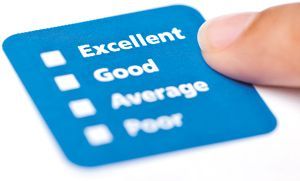Some doctors thrive in a personality-based clinic and have a loyal following no matter what services or equipment they offer, but for most chiropractic offices who are trying to grow and expand, new equipment purchases help us stay relevant and continue to service our client base in the best, most up-to-date manner possible. So, regarding equipment purchasing: should you lease, get a bank loan, or pay cash?
Consumer Reports Surveys Readers on Alternative Health Care Use
If you're wondering what consumers – your patients and potential patients – think about chiropractic care, particularly as it relates to its effectiveness managing common health conditions, consider findings from a Consumer Reports online survey of more than 45,000 of its subscribers. Survey results suggest that with the exception of back and neck pain, consumers – and Consumer Reports itself – continue to buy into the pharmaceutical model Big Pharma and others spend billions annually to promote.
And the Survey Says...
Back pain: Thirty-six percent of survey respondents utilized chiropractic for back pain; 65 percent said it "helped a lot." Prescription medication use was slightly higher (38 percent), but only a little over half (53 percent) of those who used it said it helped a lot. Over-the counter medication use was much higher (58 percent), but only 28 percent of users said it helped substantially. Other therapies with high utilization and/or perceived benefit: deep-tissue massage (24 percent use, 51 percent said it "helps a lot").
Some of the other therapies used: glucosamine / chondroitin (14 percent use / 12 percent said it "helps a lot"), fish-oil supplements (10 percent / 7 percent), yoga (9 percent / 49 percent), acupuncture (8 percent / 41 percent), multivitamins (11 percent / 5 percent).

Neck pain: Forty-one percent of CR subscribers responding to the survey said they've utilized chiropractic for neck pain; 64 percent said it "helps a lot." Deep-tissue massage was second in terms of perceived benefit (58 percent), although a distant third in terms of use (35 percent reported use). Over-the-counter and prescription meds were the second and fourth most utilized treatment methods (56 percent and 33 percent), but only 39 percent and 25 percent of users, respectively, said the medication "helped a lot."
Other therapies used: yoga (10 percent reported use / 45 percent perceived substantial benefit), acupuncture (10 percent / 44 percent), calcium supplements (11 percent / 6 percent) and multivitamins (13 percent / 4 percent).
Other conditions: For conditions from osteoarthritis to headache/migraine to fibromyalgia, chiropractic utilization was nonexistent or significantly lower than prescription and/or over-the-counter medication use. In fact, with the exception of fibromyalgia, for all remaining conditions surveyed (irritable bowel syndrome, osteoarthritis, digestive problems, depression, anxiety, headache/migraine, insomnia, cold/flu, and allergy), prescription medication was the most utilized and perceived as most beneficial ("helped a lot"). (For fibromyalgia, deep-tissue massage was utilized by 41 percent of those surveyed, compared to 71 percent using prescription meds and 49 percent who used OTC meds; but was perceived as effective by 54 percent, compared to 52 percent of prescription users and only 22 percent of OTC users).
For headache and migraine, chiropractic was utilized by only 11 percent, 46 percent of whom said it helped a lot. For fibromyalgia, 27 percent reported use; 35 percent said it helped. Eleven percent used chiropractic for osteoarthritis; 46 percent said it helped. And 2 percent of survey respondents said they used chiropractic for cold, flu and allergy symptoms, 47 percent of whom said it helped with cold/flu, while 41 percent said it helped with allergies.
CR's Consumer Warnings
We would be remiss if we didn't mention a few of the intriguing (read: typical) editorial notes from the survey article, which appears in the September 2011 issue of Consumer Reports along with comprehensive findings. For example, CR cautions readers: "Chiropractic procedures on the neck have been linked with severe side effects, including stroke, which appears to be very rare." And in a sidebar titled "Hand-on and Mind-Body Therapies: A User's Guide," the chiropractic section states: "Chiropractic is possibly effective for back pain. But there's insufficient evidence to rate its effectiveness for neck pain and many other conditions. Our medical experts warn that it might be risky for neck pain." No cautions are given for acupuncture, massage, medication or yoga.
It's also important to note that while CR tells readers chiropractic and many other therapies, including acupuncture and massage, are only "possibly" effective for limited conditions, no such qualifications are made regarding prescription and over-the-counter medication, nor are any warnings given regarding their potential side effects.


